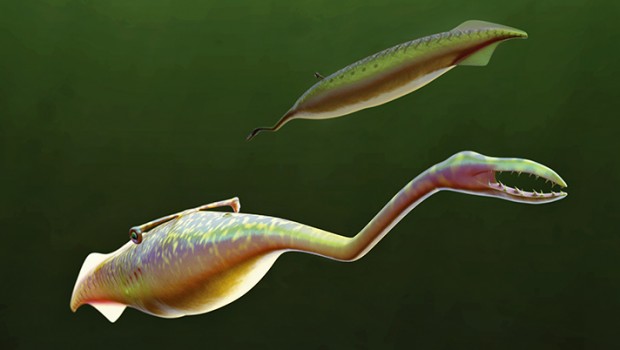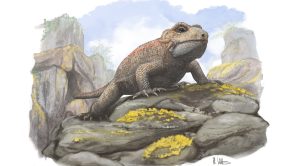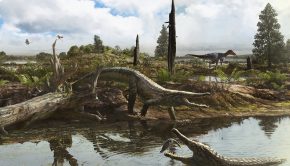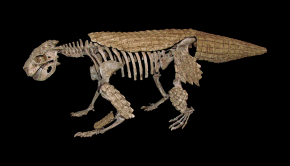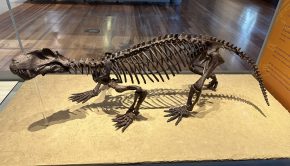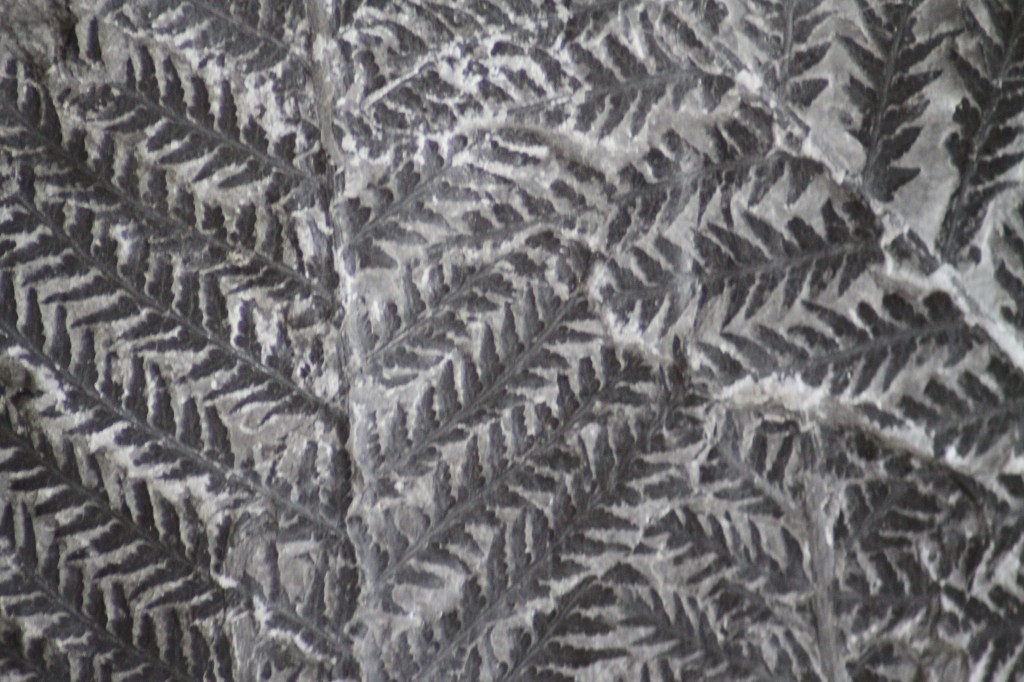Episode 62: The Tully Monster
Tullimonstrum gregarium, better known as the ‘Tully Monster’ is a problematic fossil from the Late Carboniferous Mazon Creek lagerstätte, Illinois, USA. The identity of this fossil has been the subject of much debate, due to its peculiar form. Several competing hypotheses have placed it within the arthropods, fish, worms or even molluscs.
Joining us in this interview is Dr Victoria McCoy whose work at Yale University (recently published in Nature) was able to demonstrate that the Tully Monster belonged to a different group entirely.
Podcast: Download (Duration: 48:11 — 66.5MB)
Mazon Creek is a Late Carboniferous konservat-lagerstätte (site of special preservation) located South-West of Chicago.
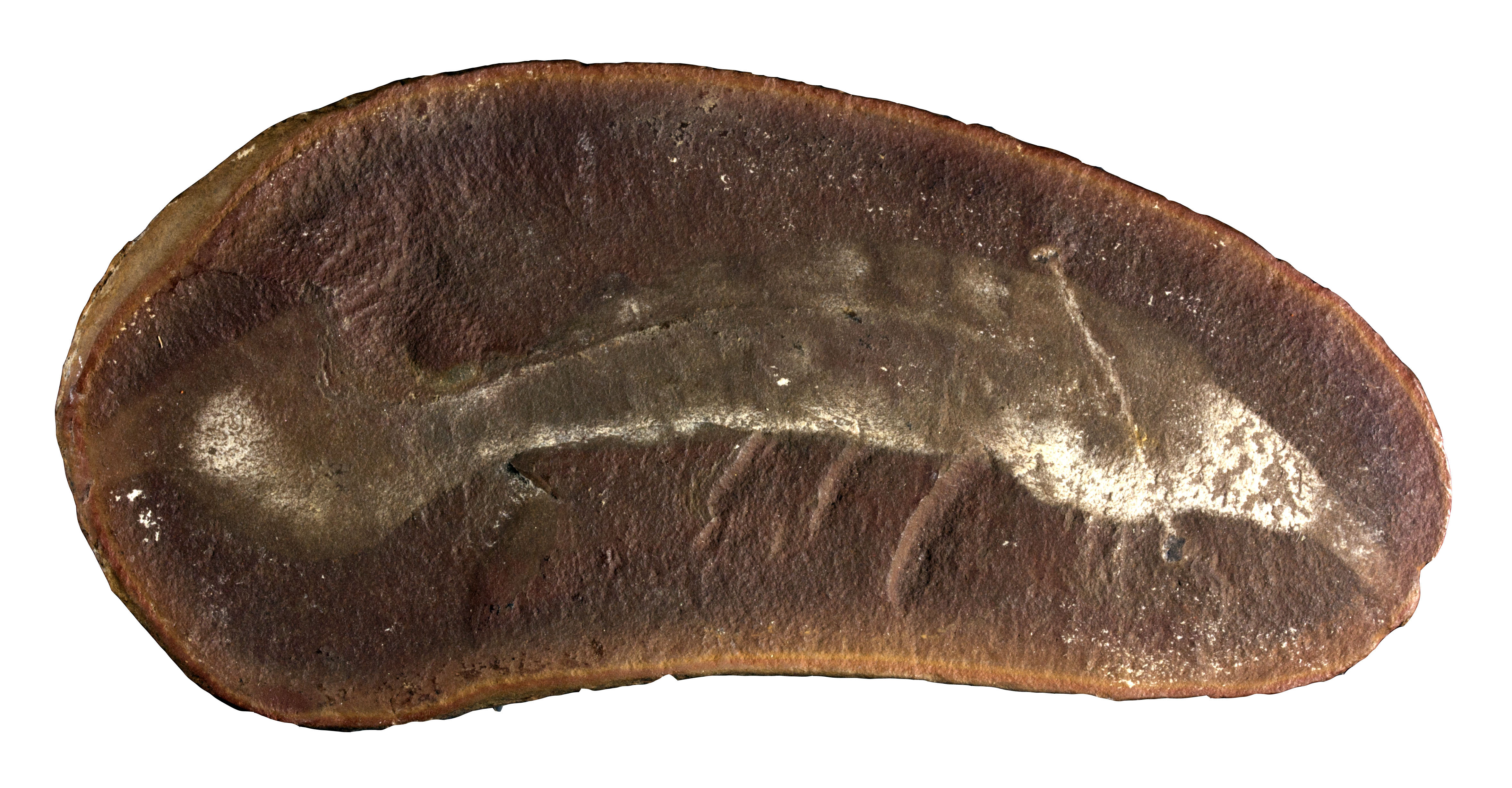
The fossils here are preserved in siderite nodules which form as a result of the decompositional products of an organism reacting with the surrounding sediments. The nodule protects the decaying organism inside which is preserved as a cast.
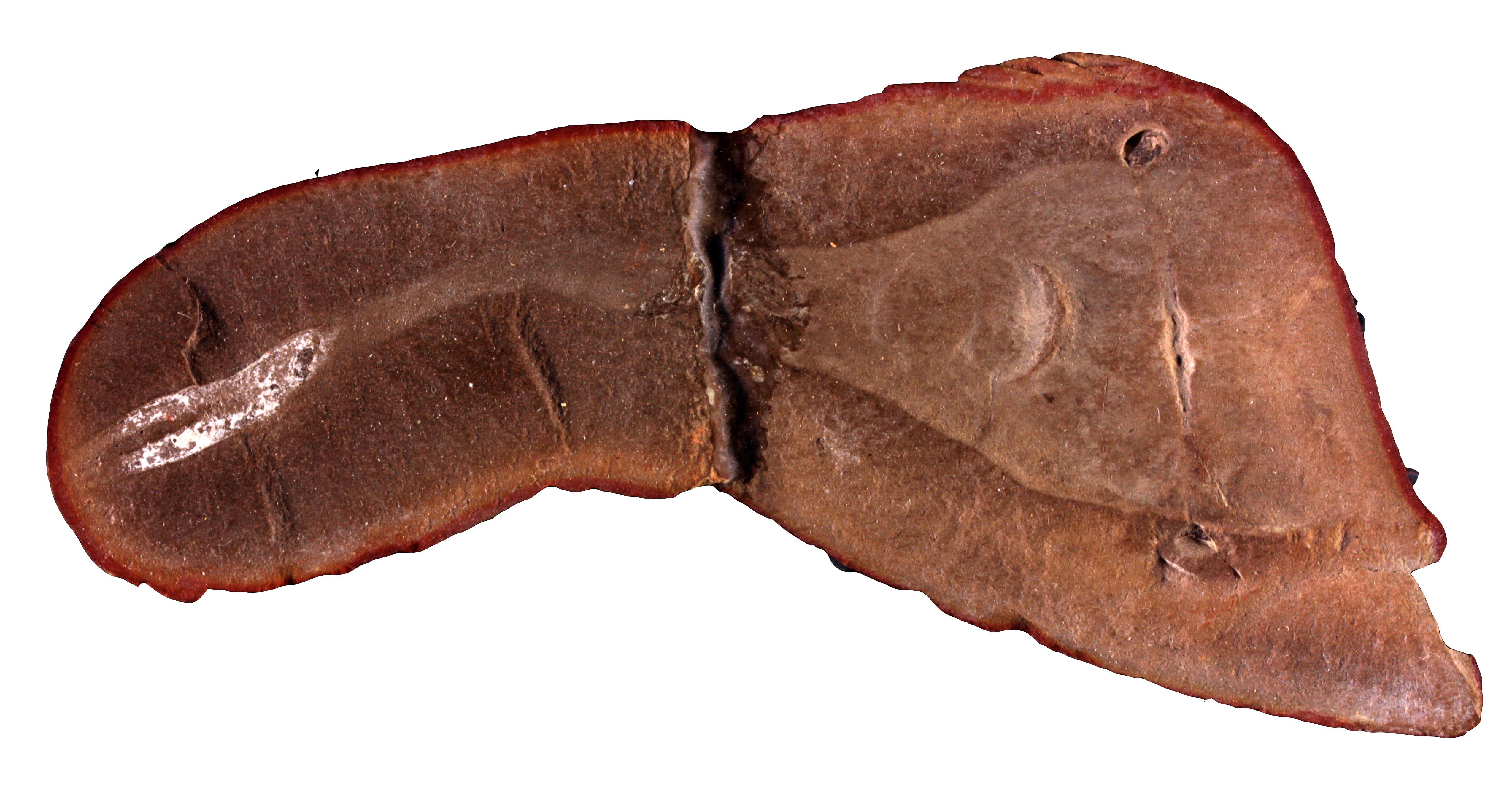
Tullimonstrum gregarium, informally known as the ‘Tully Monster’ was named after its discoverer Francis Tully. It is a peculiar animal with a long proboscis ending in a teeth-filled claw. It also possessed eyes that extended laterally on the end of a rigid bar.
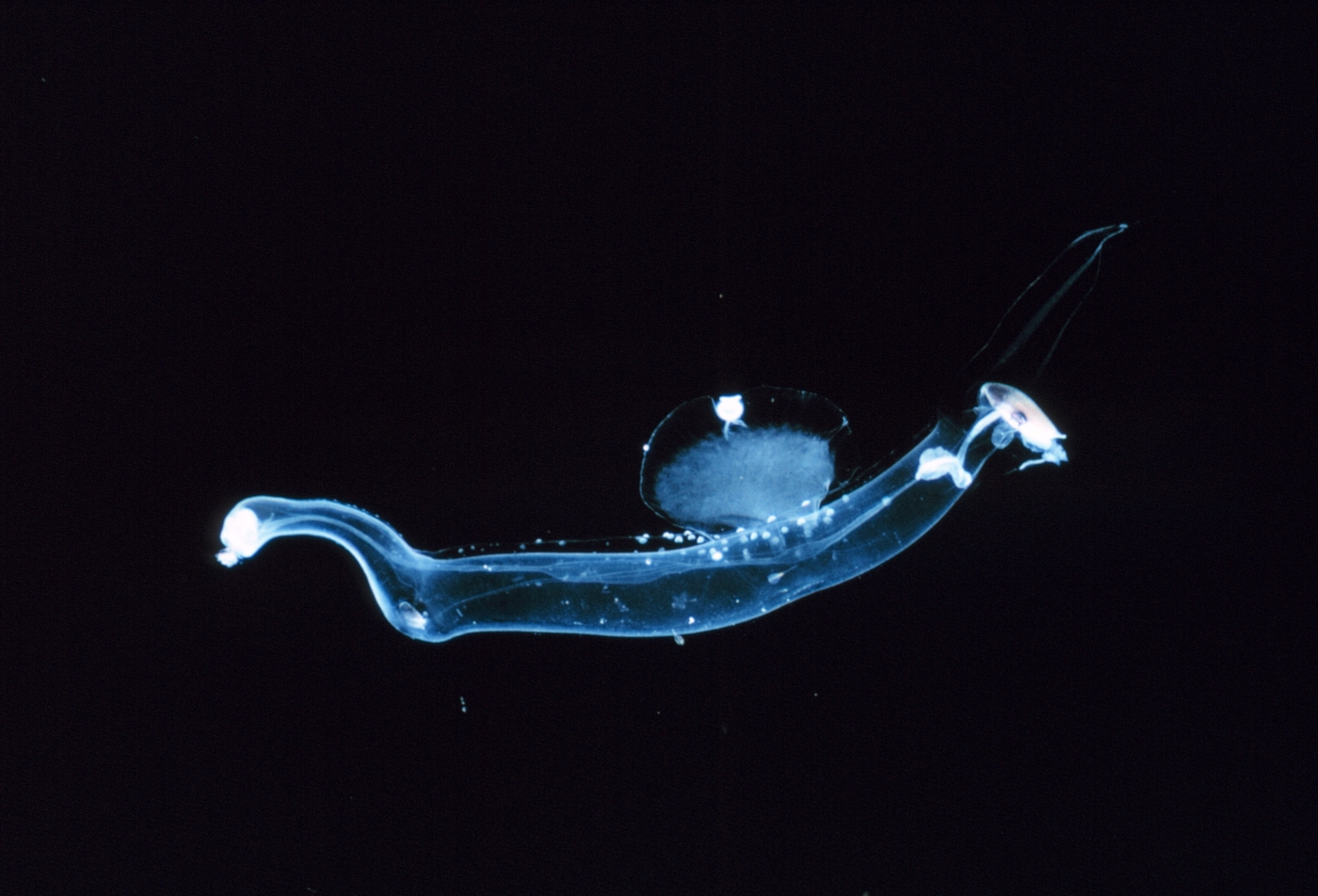
Some of the suggest groups to which the Tully Monster could have belonged to included nemertean or polychaete worms, heteropod gastropods (pictured), conodonts and arthropods. It was also suggested that the Tully Monster was part of an extinct group with no modern representatives.
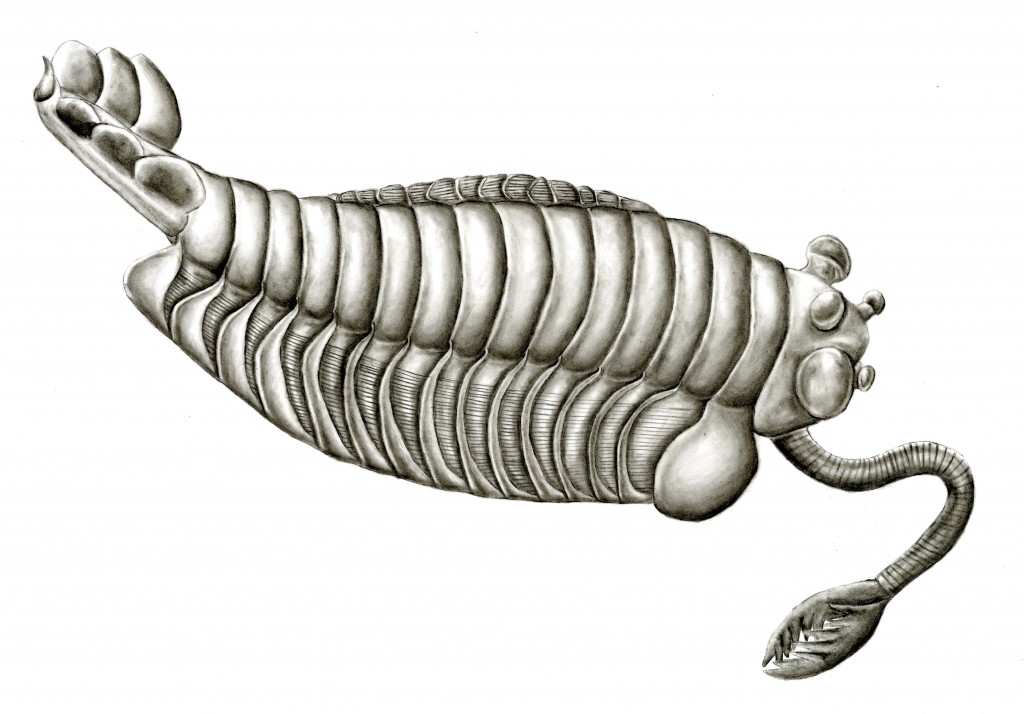
A superficially similar fossil animal was the stem-arthropod Opabinia regalis from the Burgess shale which shares a clawed proboscis and eyes on stalks. Reconstruction by Hannah Caine.

Clues as to the affinity of the Tully Monster came from the interpretation of small-scale details. The differentiation of a notochord (white arrows) from a gut trace (black arrows) was particularly important. The gut traces were distinguished by their three dimensional preservation and contained black sediment. The notochord is a defining characteristic of the chordates and can be (simplistically) considered as the precursor to the backbone.
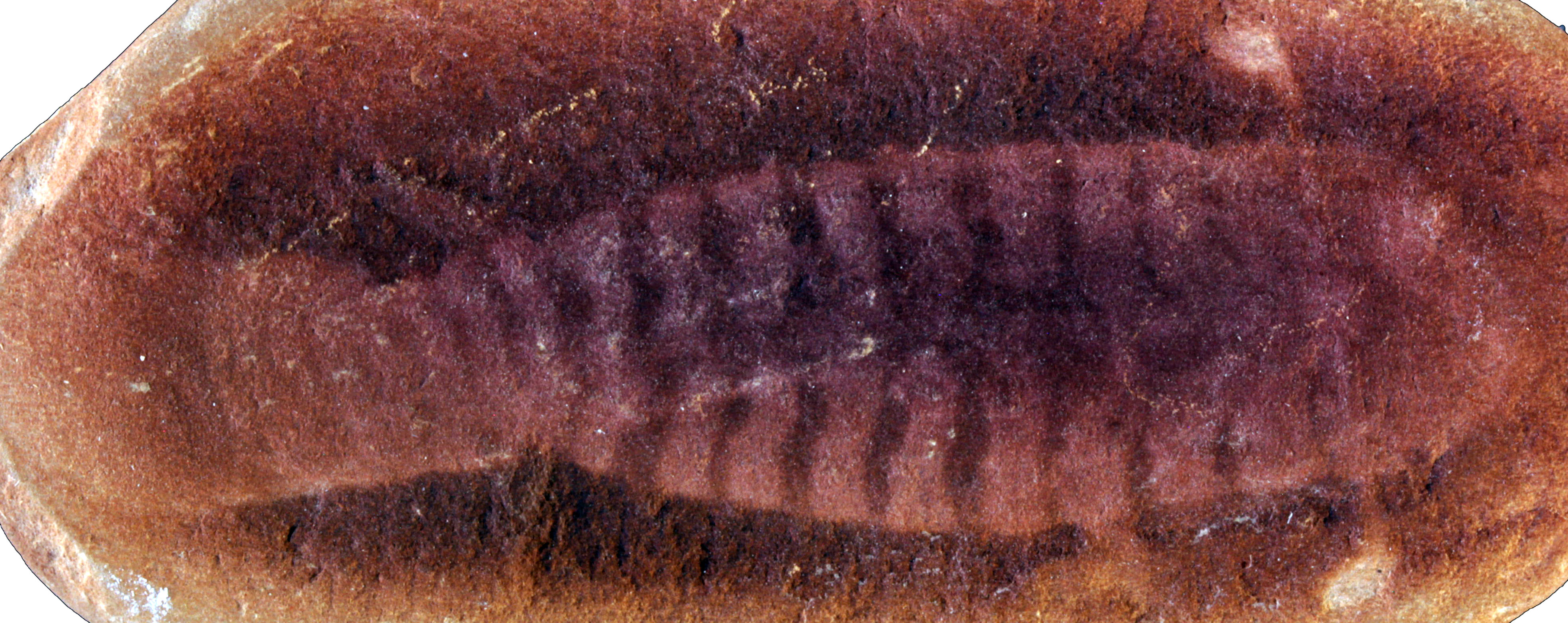
The Tully Monster is often preserved with longitudinal, ‘w’-shaped stripes which were interpreted as muscle blocks. These are another characteristic of the chordates.

Finally, a chemical analysis of the sediment around where the teeth were positioned (white arrows) revealed concentrations of pyrite, suggesting the presence of sulphur. This chemistry is not present in any other candidate organisms, again suggesting a chordate affinity.

a, A phylogenetic analysis of chordates including Mazon Creek taxa (blue text) grouped T. gregarium with the lampreys (yellow). b, Reconstruction of Tullimonstrum as a stem lamprey. c, Tullimonstrum, FMNH PE 40113, oblique lateral view (also Extended Data Fig. 2a): eyebar, Eyb; myomeres, My; gill pouches, GP; caudal fin, CF; notochord, No; otic lobe, OtL and optic lobe, OpL of brain; and dorsal fin, DF. d, Line drawing: black, teeth; brown, lingual organ; light grey, eyebar; dark green, gut and oesophagus; red, notochord; light green, brain; orange, tectal cartilages; pink, naris; purple, gill pouches; yellow, arcualia; dark blue, myosepta; blue with black stripes, fins with fin rays. Scale bar, 10 mm.
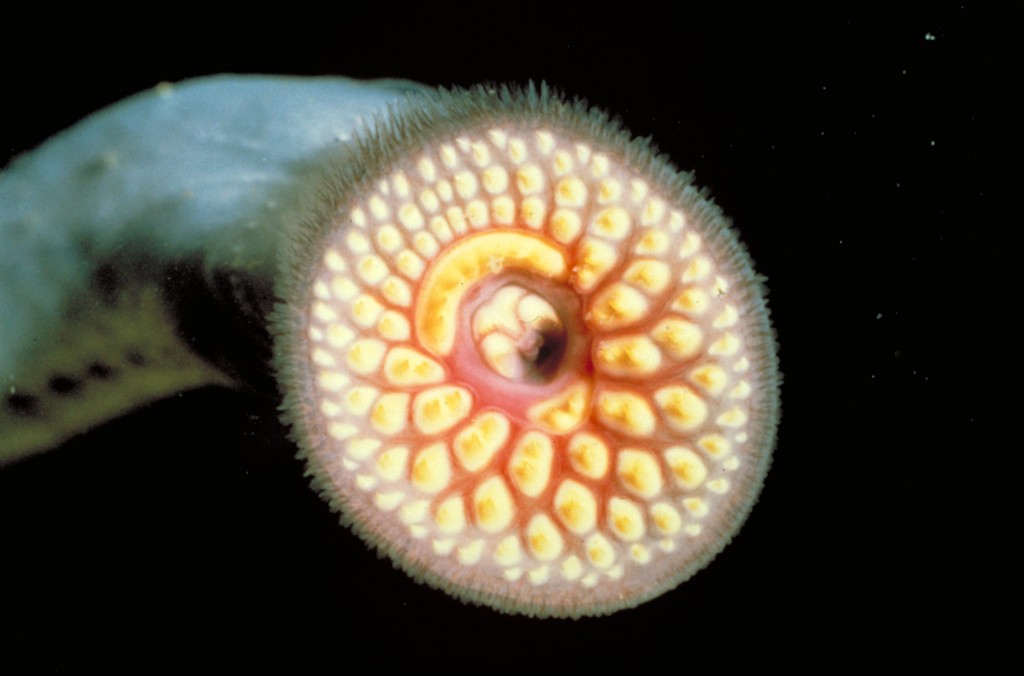
From the phylogenetic analysis, it can be concluded that Tullimonstrum was a stem-lamprey. Lampreys are vertebrates, however they lack many anotomical characters we consider as typical for vertebrates such as jaws, mineralised tissues and paired appendages. Together with their close relatives, the hagfish, they comprise the sister group of jawed vertebrates (including us humans).
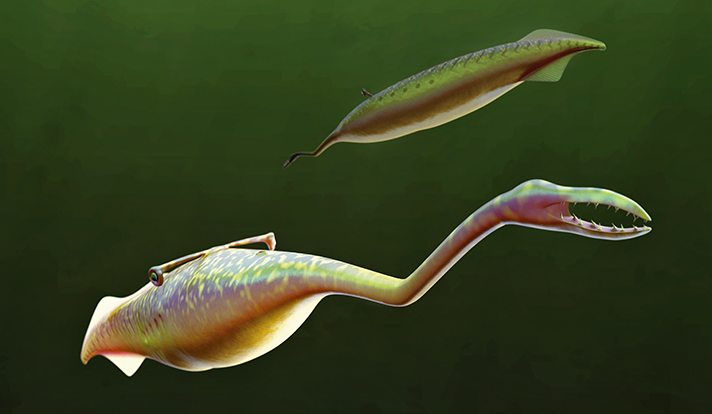
A reconstruction of the Tully Monster as it would have looked 300 million years ago, swimming in the Carboniferous seas. (Illustration by Sean McMahon / Yale University)
Unless otherwise stated, all images courtesy of Dr McCoy or in public domain.

